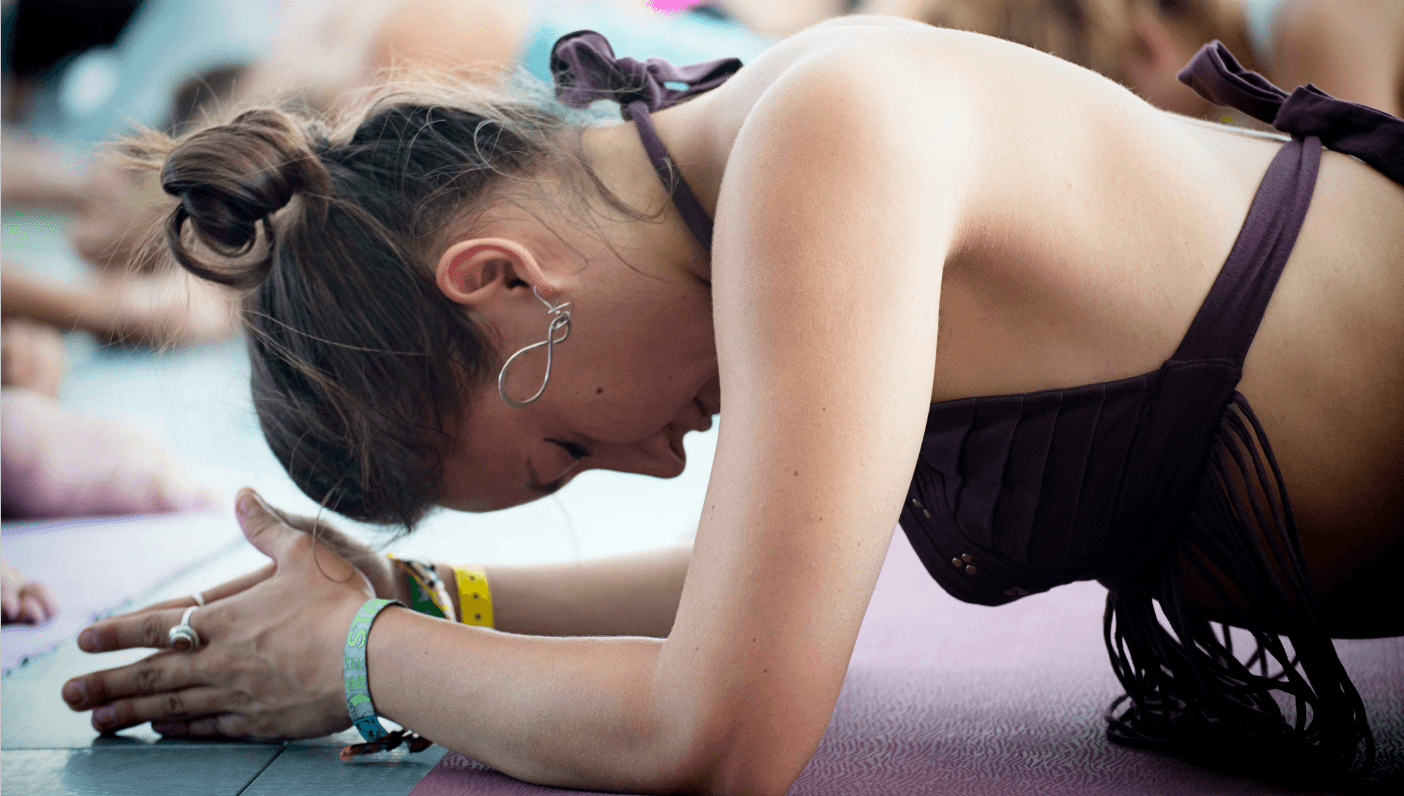
Colleen Saidman Yee is just one of the luminaries teaching at a 2016 Wanderlust Festival. Be inspired by following her on Instagram, and join us at an event near you this summer! We can’t wait to see you there.
It’s easily done. We head with our mat to the usual 7 p.m. class on Wednesdays, where we follow the cues of our favorite yoga teacher. And, at the end, no sooner have we rolled up our mat that our minds begin dictating a to-do list for the evening.
The word ‘mindful’ has become part of the yoga lexicon, yet, says renowned yoga teacher Colleen Saidman Yee, there can be a mindlessness when we do yoga. We do what we are told, instead of using our practice as a means to become deeply intimate with ourselves.
We can begin to build this intimacy by paying attention to our experiences during our practice and taking the time to reflect post class. After Colleen’s first yoga class in 1987, she says she stepped out into the streets of New York City and everything seemed different—“that something had opened up inside her. »
It was that opening inside that Colleen feels fortunate to have experienced. All it took was that one time, the memory of that feeling, to convince her to return to the mat after back surgery several years later. She’s been on her mat ever since.
Taking Class With Us
“One of the most important parts of a class is that moment post practice,” says Colleen, « yet we often miss it, as our attention wanders to where we are going or what we doing next.” Instead, she says, we’d do well to pause and ask ourselves—How do I feel now compared to how I felt going in? What was the practice today? Was it chiefly about backbends? Or was it a hip-opening class?
Colleen compares this pause after class with the pause after the exhale. “We forget there are four parts to the breath. The inhale, the pause, the exhale, the pause. In our rush we forget that final pause but there is a lot to be learned within it.” She points to the teachings of Swami Satchidananda who said that the pause at the end of the exhalation is when we come close to God. According to his teaching, it is in that pause that we have the opportunity to experience space and peace—if we are present to it.
When we get to know the nuances of our yoga practice we begin to see that the same sequence of postures every week may not be what is needed. Instead, we have just developed a habit. When we become intimate with our practice we may begin to notice that we are favoring certain postures.
“Rodney, my husband, loves backbends, while I love forward bends,” Colleen jokes. But if we stay in our comfort zones we can create an imbalance. “We forget that yoga isn’t meant to be about playing to our strengths and habits. It is about becoming intimate and falling in love,” she says. As such, it pays to look deeply at our choices in our practice—Why are we always heading to hip-opening classes? Why are we not trying a different sequence? When we allow ourselves to reflect, we may discover that an entirely different practice is needed for us in that moment.
Different Poses for Different Bodies
In her book, Yoga for Life, Colleen has tailored sequences for specific situations based on her own life experiences—for trauma, addiction, and fear. There are also sequences meant to encourage practitioners to finding their individual voice, developing love and courage. Each pose releases different emotions and elicits different psychological reactions.
If you are grieving or suffering trauma, for example, a back bend can be too much to handle. “It’s something to work toward—a life affirming posture that symbolizes embracing the next moment—but I know from my own experience that in the shock of a loss or grief that being curled in a ball is maybe all that is possible.”
For dealing with growth and other life passages, the sequences are intended to be celebratory and to lead to insight. “When we become more mindful and intentional with our yoga practice we can begin to learn the right sequence for us—on and off the mat,” she adds.
Colleen shares a nurturing posture from her sequence for relief from anxiety and trauma, designed to release tension that can be created in the back, neck and shoulders and hips.
Easy Pose (sukhasana) with a chair
Sit on the edge of a folded blanket, your right shin crossed in front of your left, and fold forward, resting your head and arms on a chair, eyes open. As much as possible, relax our hips and back muscles. This pose release tension, quiets the nervous system, and initiates the process of turning inward. Notice your breath, how your back lifts as you inhale and drops as you exhale. Stay for 10 breaths and repeat with your left shin in front of your right.
—

Helen Avery is a senior writer for Wanderlust Media. She is also a journalist, writer, yoga teacher, minister, and full-time dog walker of Millie, residing in Brooklyn, New York. You can find out more about her on her website, Life as Love.